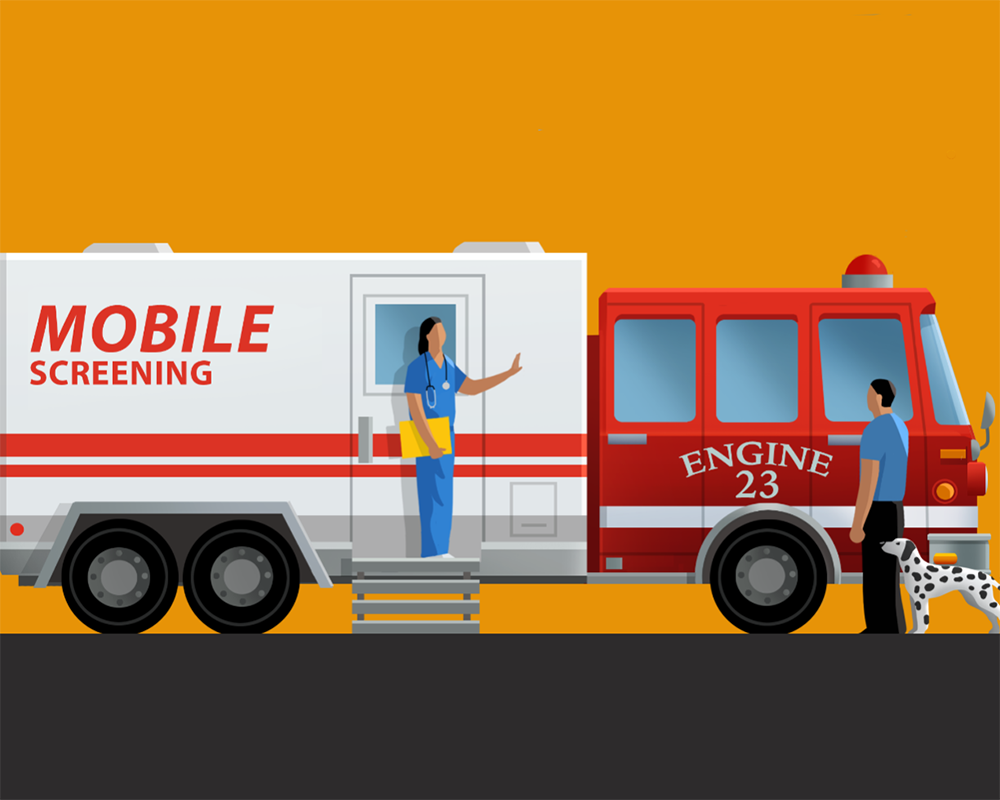First responders’ persistent exposures to toxic chemicals, abnormal sleep schedules, and constant stress may lead to a higher risk of developing cancer. In particular, firefighters have a 9% higher risk for a cancer diagnosis and a 14% higher risk of cancer mortality compared to the general population.

- Female firefighters have a 600% increased risk of breast cancer.
- Overall, firefighters have a 60% increased risk of lung cancer.
- After 20 years of service, firefighters have an increased risk of non-Hodgkin lymphoma, multiple myeloma, and colon and kidney cancer.
- After 30 years, firefighters have an increased risk of leukemia, lymphoma, and brain cancer.
ONS member Amber Thomassen, APRN-BC, AOCNP®, advanced practice nurse practitioner and nurse manager at the University of Miami Sylvester Comprehensive Cancer Center in Florida and member of the Miami-Dade ONS Chapter, recognized how oncology nurses can advocate for and support this vulnerable patient population through awareness and screening programs. She supervises APRNs and nurse navigators in her institution’s Firefighter Cancer Initiative, which uses a convenient, cost-effective, and evidence-based approach to increase access to cancer prevention education and screening for firefighters.
With funding from the state of Florida, the interprofessional team partnered with local fire departments to conduct mobile cancer screening assessments directly in the community at local fire stations.
“Our mobile clinic meets firefighters at their station and offers a very comprehensive screening visit in a convenient format,” Thomassen explained. “They are provided with a comprehensive physical exam, pulmonary function testing, and mental health, sleep health, home health, audiometric, vision, and heart health screenings.”
The team also educates firefighters about cancer screening and general health during their visits. Thomassen said that topics may include how to properly decontaminate following an emergency call, proper nutrition, and sleep hygiene. During a one-on-one follow-up visit, the nurse practitioner gives each firefighter their results and further education on areas of intervention.
“One of the firefighters went in for a routine screening, and he had no symptoms to report and had normal findings on his physical exam. However, his labs were not in normal ranges,” Thomassen said, explaining the importance of early and regular cancer screenings. “Further examination revealed a diagnosis of multiple myeloma. Through early detection, he was able to receive cutting-edge treatment, including immunotherapy and targeted agents that put his cancer into remission.”
Thomassen said that from January–June 2022, the team screened approximately 77% of the firefighters at each station, 95% of which were new patient visits—a more than 200% increase in patient volume compared to 2021. Thomassen and a team of practitioners and scientists are currently conducting research to identify new evidence-based and best practices for firefighters undergoing cancer screening or treatment.
“The future is bright,” Thomassen said. “We are about to add a second vehicle and additional staff to the initiative so we can reach more firefighters.”






